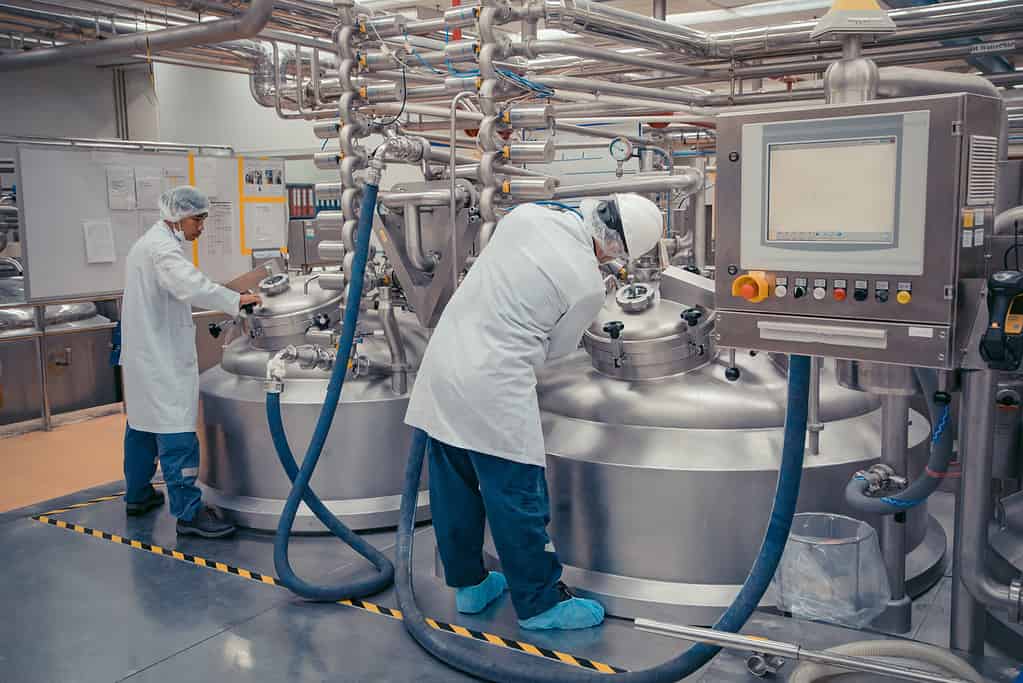
It is the first week on the job. You find yourself looking over the various processes of the new company. Production line 1 has a Sigma Level of 3.4, while production line 2 has a Sigma Level of 4.8. What do these numbers represent? Which line is doing better?
You ask a supervisor while touring the production floor. However, all you get in response is, “I don’t have any idea what these numbers mean. I’ve been told higher is better for quality, but I don’t know why. It’s all Greek to me.”
The last response elicits a half smile from you, but you walk away not understanding this metric. What does sigma level mean?
An Overview: What Is a Sigma Level?

The Sigma Level is a statistical calculation. It takes short-term information regarding the defects per million opportunities (DPMO) of a process. Further, it factors in the inclination of a process to shift and gives a level score representing the modified DPMO. It uses this shift to determine if the quality capability of the process meets customer requirements over time.
For example, 1-Sigma represents a poor level of quality, with 691,462 defects per million opportunities over time. This demonstrates a failure rate of over 69.1%. A level of 6-Sigma represents a high level of quality, with 3.4 defects per million opportunities.
It is this Sigma Level that leads to the term Six Sigma. This is a philosophy of delivering near-perfect products by eliminating defects.
Motorola engineers discovered that many of their operations were prone to shift 1.5 Sigma over time. Assuming normal distribution and normal variation of the mean, the specification limits would need to be set at a particular sigma level to achieve the desired defects per million opportunities level.
How It Applies to Your Deliverables
For example, if the long-term desired maximum defects per million were 6,210 defects per million opportunities, factoring in the 1.5 shift over time, a specification limit of +/- 4 Sigma would be required. The goal of many programs is to reach a specification limit of +/- 6-Sigma, or 3.4 defects per million.
The actual calculation for Sigma Level is commonly calculated by using a spreadsheet or online conversion webpage. Start by calculating the defects per million opportunities (DPMO) as it is currently understood. Next, find a sigma level conversion table to determine the sigma level.
The calculation will factor in the 1.5 shift over time and give you the sigma level for the process. This page will also give you defect percentage and yield values to expect over time.
Certain advanced understandings of the level can be found here. This article goes into additional detail regarding the formula as well as more information on how the formula is designed.
3 Benefits of Attending to Sigma Level

Sigma Level is often used as a way to understand the current quality capabilities of a process, how this level matches up with customer expectations, where possible areas of improvement may reside, and as verification that a process improvement project has had the intended effects.
Understanding Your Current Process Quality Capabilities vs. Customer Expectations
Remember that value is determined by the customer. Some processes can afford to have a lower sigma level, as the level of quality required by the customer is not the highest. The customer may not always be willing to pay for a process with the highest quality standards.
Other processes, such as those that can affect lives, must be capable of reaching a much higher level. Measuring the level helps you understand the current quality capabilities of a process, but it also requires a company to ask if this level is set at the right level for what the customer is willing to pay, and for the safety requirements of the process.
Demonstrate Lost Capacity Over Time
Low levels can be a great place to investigate lost capacity over time. Each time a defect occurs, it becomes a non-value-added drain to the organization. Significant costs to material and labor used during defect correction can occur.
When Sigma levels baseline values are extremely low, it can be a major cost savings opportunity to address.
Verify Improvements Achieved by Process Improvement Efforts
If a process improvement event addresses a key quality issue of a process, there should be an incremental improvement in the sigma level of the process. Measure the level before and after improvements are in place to verify that the improvements are improving quality as intended.
3 Sigma Level Best Practices
- Even if the quality level the customer wants is met, remember that any improvement past that point can still be a cost savings for the company. In contrast, there becomes a point where you get diminishing results from improving the sigma level, so be sure that these improvements don’t cost more than the cost of the defects they are addressing.
- As with any metric used to determine future process improvement projects, be sure to address the areas that will result in the highest improvement in quality.
- For the vast majority of companies, a Sigma Level of 6 should be the goal but don’t expect to achieve it. It’s more important to understand how much your customer is willing to pay for quality — and that the desired sigma level can be met at that cost.
Conclusion
Sigma Llevel is an easy-to-use approach that factors in a statistical shift of specification limits to match capability expectations with customer expectations. This value is understood across all industries, and it’s important to monitor it to be sure your company maintains quality over time.